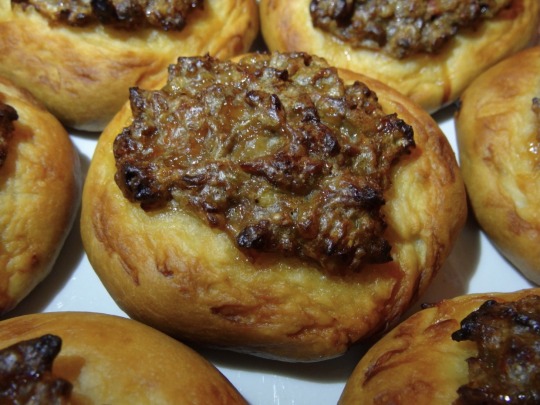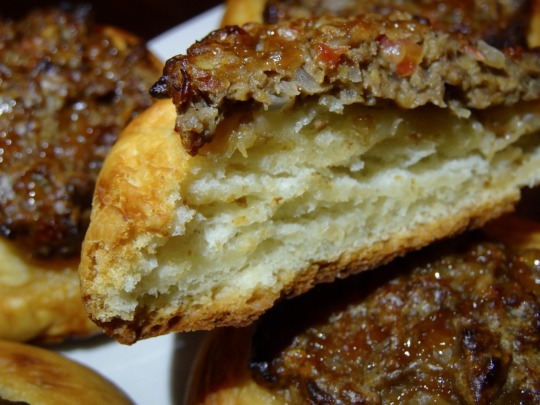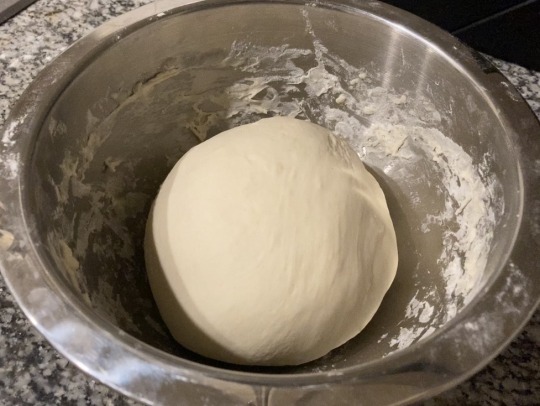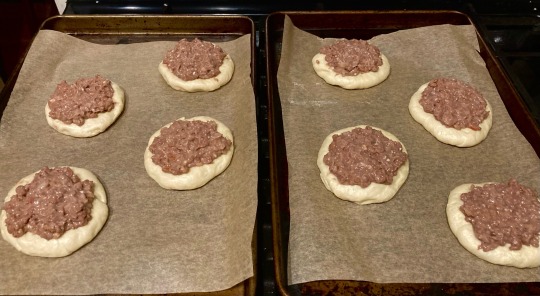#esfiha
Explore tagged Tumblr posts
Text
Curso online com certificado! Massa de pizza e pastel - como fazer
Nesse tutorial de 10 vídeos você irá aprender como confeccionar da melhor forma uma massa para pizzas e pasteis, passo a passo. Faça sua inscrição:
#abrindo#abrindo massa de pizza#abrir#adenilson pizzaiolo#ana maria braga#beirute#calzone#comida árabe#como fazer beirute#como fazer massa de pizza#coqueiros#edu guedes#esfiha#fazer#forno a gás#forno a lenha#mas você#massa#massa de pizza#massa de pizza de pizzaria#massa para pizza#massa pizza#massas de pizzas#molho#molho para pizza#pizza#pizzaiolo#pizzaria#pizzaria do pizza#pizzaria do pizza mongagua
0 notes
Text
JANTAR DE DOMINGO ESPECIAL NA CASA DA ESFIHA MISTER MALAK COM PORÇÃO DE BATATAS, COM ESFIHA FECHADA DE NUTELLA COM MORANGOS EM SERRA NEGRA--SP BRASIL 29/12/24 #❤Batatas #esfihas❤ #nutella🍫❤️ #morango #Domingou✌
0 notes
Text
Lista de Novidades da Semana (28 de outubro a 03 de novembro)
Estão prontos para o mês de novembro? Fechamos o mês com ações e novidades bem interessantes no mercado, fique de olho!
0 notes
Text
0 notes
Text
ESFIRRA DE CARNE VEGANA 🌱
Recheio:
1 xíc. de proteína de soja texturizada crua
1 cebola em cubos
sal
azeite/óleo para refogar
2 colheres de chá de páprica defumada
1 colher de café de tempero sírio
1 colher de sopa de shoyu
1 tomate em cubos
Ferver a proteína de soja na água por 5 minutos, lavar e escorrer com o auxílio de uma peneira. Espremer bem a carne de soja, para que fique bem sequinha e reserve.
Refogar a cebola no azeite em fogo médio. Quando estiverem mais cozidos, adicione a carne de soja espremida e deixe que ela doure nesse refogado.
Depois adicione os tomates, shoyu e temperos. Mexa mais um pouco e deixe o recheio esfriando na geladeira.
Massa:
350g aprox. de farinha de trigo + um pouco de farinha para enfarinhar a bancada/abrir a massa
1 xíc. de água morna
10g de fermento biológico seco
1 cs de açúcar
2 cs de óleo ou azeite
1 c. de chá de sal
fubá fino para abrir a massa (opcional)
Primeiro misture a água morna com o fermento e açúcar e deixe essa mistura descansar por 10 minutos.
Adicione a farinha de trigo aos poucos, o azeite e sal. Mexa bem com uma colher e depois que a massa estiver um pouco mais firme, comece a misturar com as mãos.
Transfira a massa para uma bancada enfarinhada e sove um por uns 10 minutos, apenas para misturar todos os ingredientes.
Deixe a massa descansando em um pote com um pano de prato cobrindo por 10 minutos.
Leve a massa para uma bancada enfarinhada e divida em 12/13 bolinhas e abra no formato de um círculo com um pouco de fubá por baixo, massa deve ficar bem fina e recheie o meio da massa com a pts temperada e feche no formato de esfirra.
Disponha as esfirras em uma assadeira untada e sem estarem muito grudadas. Passei uma mistura de bebida vegetal com melado por cima das esfirras para dourarem bem. Leve ao forno pré aquecido a 200ºC por 20min (não deixe dourar demais). Pincele azeite assim que sairem do forno para a massa ficar macia.
0 notes
Text
i need a job so i can order takeout again
3 notes
·
View notes
Text
i must not order food ordering food is the mind killer
2 notes
·
View notes
Text
i see ppl irl named eda and i'm like "oh cool, eda clawthorne is selling esfihas now. good for her"
1 note
·
View note
Text
Just found this at the bus stop


0 notes
Text


[ID: First image is a close-up on a plate of small flatbreads topped with ground ‘meat’; second is a cross-section of one of the breads. End ID]
صفيحة فلسطينية / Safiha falastinia (Palestinian topped flatbread)
Etymology and origins
صَفِيحَة (“ṣafīḥa”), also transliterated “sfiha” and “sfeeha,” is a flatbread eaten in Palestine, Lebanon, and Syria, comprising a yeasted dough topped with a filling made from ground lamb or beef, spices, and chopped aromatics and vegetables. It may also be called “اللَحْم بالعَجِين” (“al-laḥm b al-‘ajīn,” “meat with dough”)—this phrase is the source of the Turkish “lahmacun” and the Armenian “Լահմաջո” (“lahmadjo”), which describe a closely related dish.
The word “صَفِيحَة” literally means “thin plate” or “sheet”; it comes from the root ص ف ح (ṣ f ḥ), which produces words related to flatness. Compare for example “صَفَّحَ” (“ṣaffaḥa”) “to flatten,” “صَفْحَة” (“ṣafḥa”) “page,” and “صَافَحَ” (“ṣāfaḥa”) “to shake hands.” This term has been borrowed into Brazilian Portuguese as "esfirra" or "esfiha," when the flatbread was brought to Brazil by Levantine immigrants—mostly Christians—beginning in the 1890s. Today, esfiha has been naturalized as a "'typical' Brazilian bar food"; it is said that the typical resident of São Paulo is a "Japanese who speaks Portuguese with an Italian accent while eating an esfiha."
In English, lahmacun (also transliterated "lahmajoun") is sometimes called "Armenian pizza." Similarly, it may be called "صفيحة الأرمنية" ("safiha al-'armaniyya"), "Armenian safiha," in Palestine, indicating that it is regarded as a borrowing from the local Armenian immigrant community. In Armenia, lahmadjo is a very thin, soft flatbread typically topped with beef or lamb, tomatoes, tomato paste, bell peppers, onion, garlic, parsley, red chili paste, and black pepper. With Palestinian safiha, lamb is the typical choice of meat; the dough may be thicker, and enriched with the addition of milk, milk powder, or yoghurt; bell peppers are ommitted; and fried pine nuts may be added. Palestinian restaurateur Nassar Odeh remembers lahmadjo being served in Jerusalem's Old City decades ago; he says that "Armenian dishes" such as this have become "part of the Palestinian culture."
Though the Arabic-derived "lahmadjo" and related terms may be heard, [1] the most common Armenian-language name for this dish is "լոշմիս" ("loshmis")—presumably from "լոշ" "losh" "lavash, thin bread" + "միս" "mis" "meat." Some Western Armenian variations on the name reverse this order (meat-dough, rather than dough-meat): "մսաշոթ" ("msashot"), from "մսա" "msa" "meat" + "շոթ" "shot" "thin bread"; and "մսալոշ" ("msalosh"), from "մսա" "msa" "meat" + "լոշ" "losh" "thin bread."
The dish
A common part of everyday Palestinian cooking, صَفَائِح ("ṣafā'iḥ"; plural of "ṣafīḥa") are often eaten as a snack or a portable lunch. They may also be served as a مَزَّة ("mazza"; "appetizer") for عِيد ("'īd"; "feast," "holiday"; often transliterated "Eid") or Christmas.
Safa'ih are shaped into pinwheels in the port city of يَافَا ("Yāfā"; often transliterated "Yaffa" or "Jaffa"), stuffed with ground meat or spinach. In the Bethlehem region the topping is often mixed with tahina, as well as vinegar or lemon juice, and perhaps pomegranate molasses. Other versions of the meat topping omit tahina and vinegar, and are more tomato-heavy instead.
This recipe is for Bethlehem mazza-style safa'ih, with thick crust that's crisp on the outside and light and fluffy on the inside. Vinegar and pomegranate molasses provide a bright, slightly fruity lift to the topping, while tahina grounds it with a toasty, nutty aroma. Black pepper, allspice, and a green chili pepper add complexity and heat.
[1] There is a proliferation of possible spellings for "lahmadjo" in Armenian, which would indicate that it is a loanword (probably via Turkish, ultimately from Arabic). These spellings include "լամաջո" ("lamadjo") [common]; "լահմաջո" ("lahmadjo"); "լահմաջու" ("lahmadjou"); "լահմաջոն" ("lahmadjon"); "լահմաջուն" ("lahmadjoun") [literary; uncommon]; "լահմաջին" ("lahmadjīn"); and "լահմաջի" ("lahmadjī") [rare]. The letter "ջ" is pronounced as "dj" (IPA: [d͡ʒ]) in Eastern Armenian and a "tch" (IPA: [t͡ʃʰ]) in Western Armenian (timestamp: 40:33).
Support Palestinian resistance by donating to Palestine Action’s bail fund; buying an e-sim for distribution in Gaza; or donating to help a family leave Gaza.
Ingredients:
Makes 24 small safa'ih. Serves 24 as an appetizer, or 6-7 as a main dish.
For the dough:
5 cups (600g) white flour
1 cup (230g) non-dairy yoghurt (لبن رائب) (I used soy)
1/2 cup (125 ml) olive oil
1 1/2 Tbsp (15g) dry yeast
1/2 Tbsp (4g) kosher salt
1 tsp (5g) sugar
A scant cup (220g) of water
A more "everyday" preparation of this dish might make larger, flatter safa'ih out of a dough without dairy. This holiday variant includes yoghurt and makes smaller, fluffier safa'ih; but the yoghurt may be omitted (or milk or milk powder may be added) without injury, and the flatbreads can be made any shape you like.
Leila al-Haddad writes that, in Gaza, white flour used to be eaten as a treat and for special occasions before it later came to replace whole wheat white flour in many kitchens.
For the topping:
500g ground beef substitute (as a replacement for minced lamb)
1 medium tomato, minced
1 medium onion, minced
1-2 green chili peppers, minced
2 tsp kosher salt (1 tsp table salt)
3/4 tsp black pepper
3/4 tsp allspice; or Palestinian 7-spice / mixed spices (بهار مشكل)
1/4 cup white tahina
2 Tbsp pomegranate molasses
2 Tbsp white vinegar, or lemon juice
For a tomato filling, omit the tahina and vinegar, and instead use 2 Tbsp tomato paste; or 8 diced or puréed tomatoes, cooked down.
Instructions:
For the dough:
1. Combine all dry ingredients in a large mixing bowl.
2. Make a well in the center and add in the yoghurt, olive oil, and water. Mix them together and then combine them with the rest of the dough. Add water or flour as needed to obtain a soft, slightly tacky dough.
3. Knead the dough on a clean surface for 5-10 minutes, until it bounces back when pressed. Allow to rise, covered, in an oiled bowl for 1-2 hours, until doubled in size.

For the filling:
1. Mince vegetables, or run them through a food processor. Mix all filling ingredients together.
To assemble:
1. Divide dough in half, and then half again; roll out each quarter of the dough into a cylinder and cut it into six equal pieces.
2. Roll each piece of dough into a ball between your hands, and then flatten it into a disc about 1” (2 1/2 cm) high and 3” (8cm) wide. Place on a baking sheet prepared with parchment paper, leaving an inch of space between each circle.
3. Press the center of each dough circle down to create a crust around the edge. Add a few spoonfuls of filling to the center of each safiha and press flat.

4. Bake safa'ih in the middle of an oven at 450 °F (230 °F) for 25-30 minutes, until crust is golden brown.
Serve as an appetizer alongside vegetable salads, pickles, olives, &c.

438 notes
·
View notes
Text
Pasteizinhos do Gastronominho 2024 – #008
Os destaques prometem heim? Aquelas notícias rapidinhas e no capricho para quem acompanha a gente por aqui!
0 notes
Text
Esfihas and kibes are so common in Brazil that until a couple of years ago I thought they were just another Brazilian dish
23 notes
·
View notes
Text
Christmas lunch is great mostly because I get to eat nice food, my grandma made potatoes and homemade esfiha (no clue if there is a name in english for it but imagine like, a baked dough filled with meat and tomatoes)
And then later Christmas dinner <3 with baked chicken and nice almond rice <3
34 notes
·
View notes

